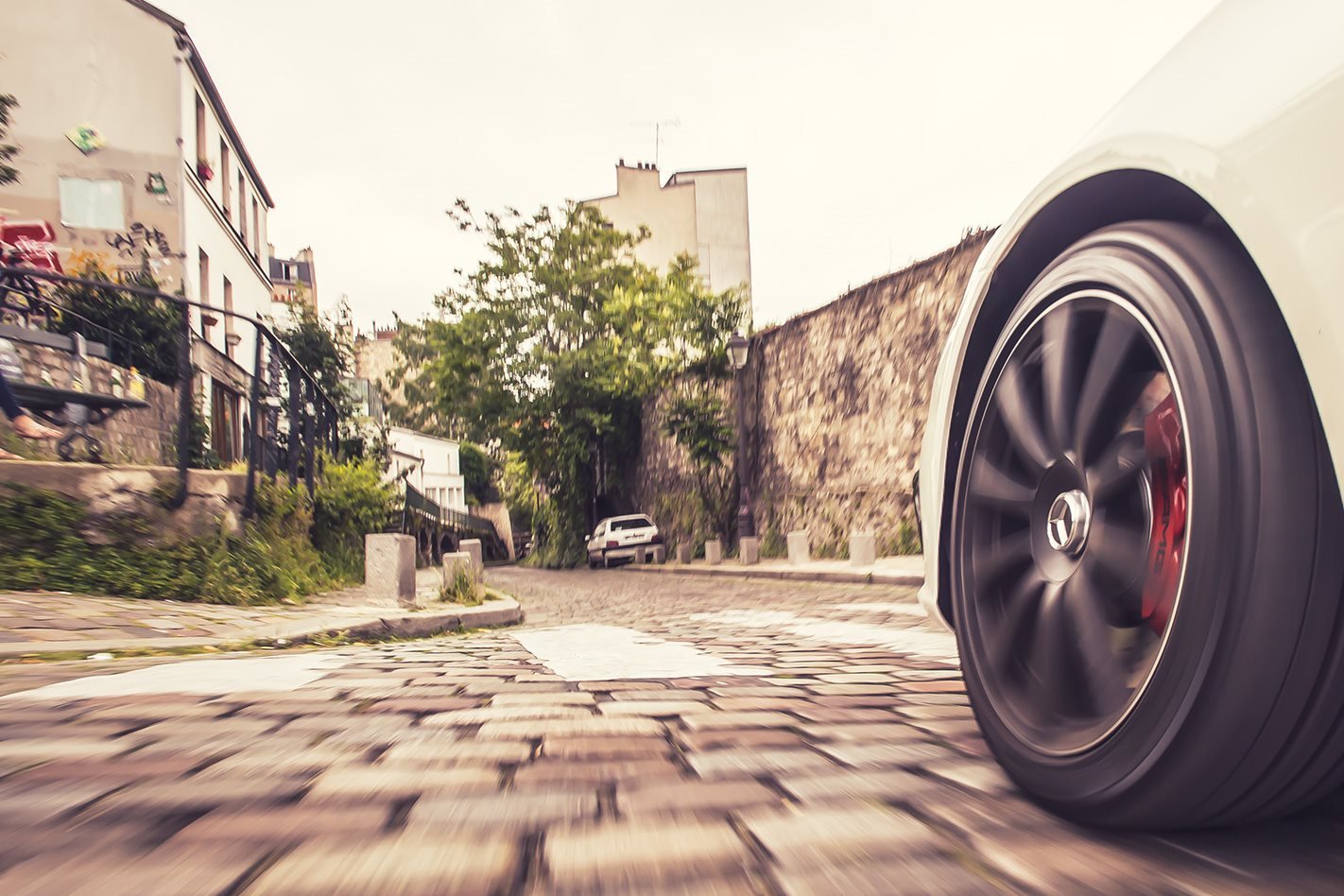Rendezvous is one of the greatest car movies of all time. And possibly a con. We relive the drive through Paris 40 years later, and debunk the myths.
First published in the December 2016 issue of Wheels magazine, Australia’s most experienced and most trusted car magazine since 1953.
IT IS as instantly recognisable as a spinning Cragar mag on a Highland Green Mustang, or a helmeted, racecar-steering driver raising one hand to shield his eyes against the high-altitude Colorado sun.
The camera angle is low, the film grainy, the light murky over the cobbled streets of pre-dawn Paris. Then there’s the soundtrack: the urgent strain of a high-revving V12, its mechanical noise and punctuating gearshifts betraying a time when supercar engines were the most complicated of all, not the most clinical.
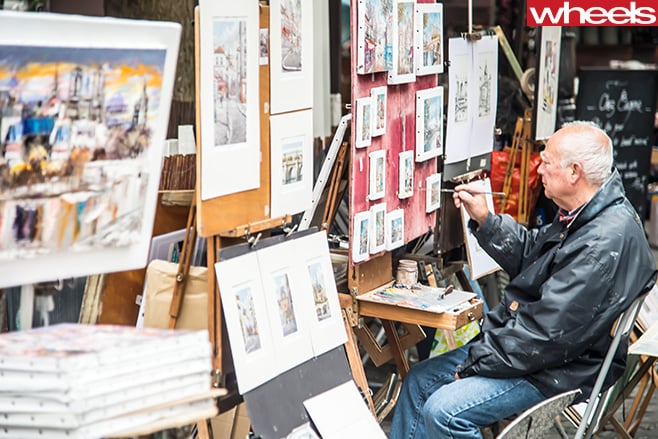
The driver was rumoured to be racers Jacky Ickx, Jean-Pierre Beltoise or Jean Ragnotti; the car, a Ferrari 275 GTB belonging to the film’s director, Claude Lelouch. Not that he’d be having much use for it, as it’s said he was immediately arrested when the film was shown.
None of the embellishment of the ages can diminish the stature of this wordless film, shot as a single take over eight and a half minutes, as a classic in car culture.
In August 1976 Lelouch was a top mainstream director, feeding France’s appetite for navel-gazing, faux-philosophical romances. He’d had international success in 1966 with
A Man and a Woman, a film that revealed his familiarity with fast cars; the main character (played by Jean-Louis Trintignant, nephew of dual Le Mans winner Maurice) has survived a near-fatal crash in the Le Mans 24 Hours.

“For a long time, I wanted to tell the story of a guy late for an appointment, who committed lots of infractions to be on time,” Lelouch explained in 2005 to authors Yves Alion and Jean Ollé-Laprune for their book Claude Lelouch, A User’s Manual. “For me, being on time is an obsession. I’m capable of taking incredible risks to not be late.”
Lelouch, now 78, did not respond to Wheels’ requests for an interview. But we went to Paris anyway, to relive his film on its 40th anniversary.
An early print of Rendezvous gives the date: Friday, 13 August, 1976. It’s risky to assume the date is correct because so many of the myths around this film have been denied or disproved. But certainly Lelouch shot in August, when Parisians flock south on annual holiday.
Lelouch himself did the driving. The car was his own, but it wasn’t a Ferrari. It was a Mercedes-Benz 450 SEL 6.9, an iron-fisted limo chosen mainly for the smooth ride from its hydro-pneumatic suspension.
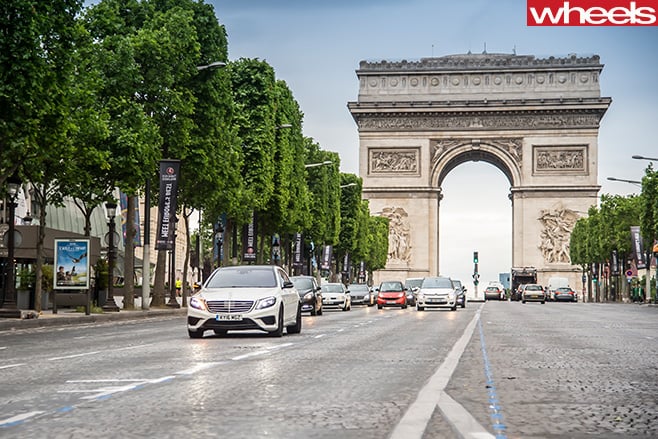
The S63 L was the perfect homecoming car for me, too. I lived in Paris from
2000-04, the last three of those years under mayor Bertrand Delanoë. While introducing the city’s much-loved Paris Plage (the summertime conversion of a riverside motorway into a ‘beach’) and Velib bicycle-sharing scheme, Delanoë was a car-hater who ripped out kilometres of roadway.
Thanks to 40 years of progress – some good, some bad – it’s no longer possible to retrace exactly Rendezvous’ original 10.5km route. But one can run it pretty close.
Lelouch started on the western side of Paris, on the Boulevard Périphérique at Porte Dauphine. He raced up the broad, garden-framed Avenue Foch to the Arc de Triomphe, peeling off to head south-east on the famous Champs-Élysées.
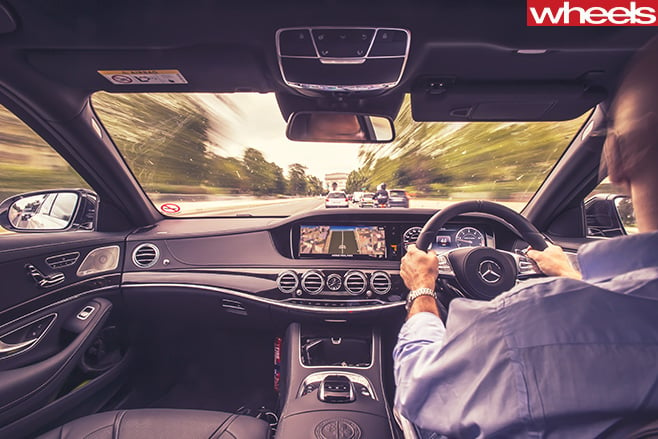
Lelouch explained: “I wanted to provide a sort of reportage. My problem was to develop a plan that did not exceed 10 minutes, and that found its interest at the end with the girl who arrives on the steps.”
So he followed the Champs-Élysées, squealed through the Place de la Concorde and scud-ran alongside the Seine. He then turned hard left through the courtyard of the Louvre museum to burst onto Avenue de l’Opera, swerving around the majestic Opera Garnier and the grand department stores behind it.
Narrow, cobbled streets carried him to Place Pigalle, turning hard left on Boulevard de Clichy to pass the famous Moulin Rouge. A hard right led over the Montmartre Cemetery – incredibly, the road actually goes over it – and into the pinched, cobbled maze that eventually crested Montmartre, spilling onto the south-facing steps of Sacré-Coeur.
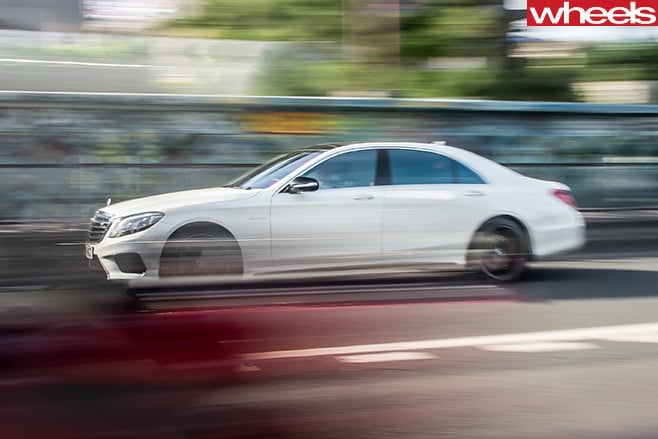
With his assistant, Elie Chouraqui, he considered the necessary permits. They would have to shut down a quarter of Paris.
A stuntman offered his theory about running red lights: Anything not already in Lelouch’s field of view was unlikely to arrive before he did; and if something did appear, he could always brake…
Starting at about 5:30am, Lelouch completed his 10.5km sprint in 8min 21sec. He ran a total of 18 red lights, veered onto the wrong side of the road and the footpath when traffic blocked his way, and scared a bunch of pigeons and a few pedestrians in the process.
A big part of the magic and mythology lay in the soundtrack, said to be a Ferrari 275 GTB. The impression of speed is enhanced by the low camera angle, but comes just as much from the glorious full-throttle sprints through the gears. Purists can spot that sound and vision don’t marry.

That’s what I’d most wanted to ask Lelouch; how the overdub was done. Some say a Ferrari retraced the route; if that’s so, it must have been one with a dual-range transfer case. More likely is that the Ferrari was on a rolling road, with the footage screening in front of the driver.
After the film was released, the Paris police called Lelouch in for a chat. Lelouch said the top cop read out a long list of traffic offences and asked him to hand over his licence. The cop held it for a few seconds, then handed it back, grinning: “My children love your little film.”
Not everyone was so admiring. Many were dismayed by Lelouch’s selfishness and stupidity. In the wake of the 1973 oil crisis, France and other European countries had introduced speed limits and strict policing. Rendezvous lobbed like a mortar, in the middle of an uneasy truce between car enthusiasts and cash-greedy governments.
Forty years on, Paris has bigger problems. Our Rendezvous re-run faces re-directed roads, a tangle of cycleways, and sandbags barricading the Louvre against the recently flooded Seine.
Most discouraging of overzealousness, however, are the 6500 heavily armed, flak-jacketed French troops on Paris’s streets, enforcing France’s state of diversity. Er, emergency.

At 5:15am on a Thursday, we’re at Porte de la Muette attaching a trio of GoPro cameras to our big pearl-white Mercedes-AMG. It’s all rather less conspicuous than the pipework rig and Éclair CM3 movie camera on the prow of Lelouch’s limo.
I’m feeling pressure and anxiety. We’d done recce runs the previous day, but this was like drag racing; if we mess something up, we can’t fix it next lap. Still, we could always come back next day. Lelouch wasn’t likely to get away with a second take.
Opposite, I watch a Renault Talisman repmobile sail into the intersection, shaping up to turn left. He’s clearly not intending to stop for the red light – but sees our camera-carrying gangsta AMG and suddenly throws everything at the anchors.
Here were we, being all nervous and goody-goody, while there’s probably a few hundred thousand Claude Lelouches commuting every morning.
We’re underway, rising from the peripherique, rounding the Porte Dauphine and suddenly weaving along the broad, rumbling surface of Avenue Foch. I surprise myself by impatiently barking out

“C’mon-c’mon-c’mon!” at a dozy taxi driver.
Lelouch claimed he’d topped 180km/h along here. We’re doing 60.
Spilling into the expanse of the Arc de Triomphe, my nerves are really jangling. But intersections in Paris often make you feel like that; you’re half-expecting someone to plant a hatchback in your door.
Being 5.30am, the street lights on the Champs-Élysées are switched off. Pity the traffic lights aren’t, too, instead of prioritising phantom pedestrians. Lelouch claimed he did 160km/h here, slowed and fake-squealed to 150 through Place de la Concorde, then accelerated to 200km/h along the Quai François Mitterand. We stick to a safeneck 60km/h, noting the early commuter traffic on the Quai.
We approach our first mandated detour, at the blocked left turn to the Place du Caroussel, the courtyard of the Louvre. We’re 5.3km into the original route, almost exactly half way. Our stopwatch reads eight minutes. Forty years minus 10 seconds ago, Lelouch was already playing grab-arse with his girlfriend at Montmartre.

Lelouch had exploded straight across this road, passing through the completely blind exit from the Place du Caroussel. The sole precaution he had taken for the entire film was to position Chouraqui here with a walkie-talkie, to warn of anything oncoming. “When Chouraqui didn’t call me, I passed through the gates at 100km/h, because the passage is quite narrow.
I didn’t know that the walkie-talkie wasn’t working…”
I hear the frustration in my own voice as we have to travel a block farther west to (legally) pick up Avenue de l’Opera. Opening up again, the Merc’s sinister engine note reverberates in the broad boulevard. Sometimes, 60km/h can feel really fast.
In Rendezvous, it sounds really fast.
Four minutes into the film, Lelouch enters a pinched section near the head of Avenue de l’Opera. The gnashing engine note cascades through a delicious series of heel-and-toe downshifts. The symphony of sound and physics distracts you from the fact that he’s veering into the path of an oncoming bus.
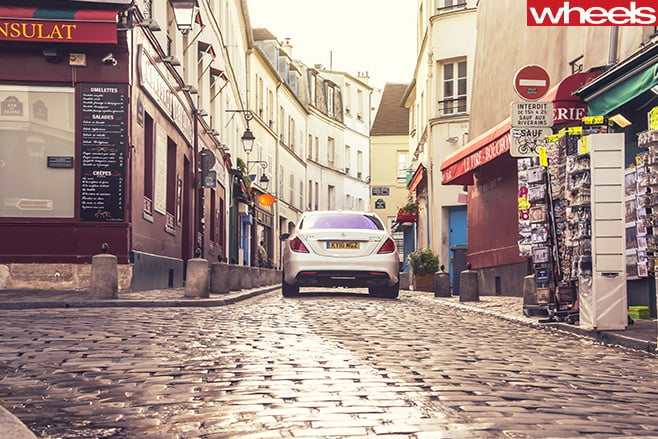
Directly across Boulevard Haussmann is Chaussée d’Antin, splitting Galeries Lafayette’s department stores. If I were a Gauloise-smoking, gold-medallioned, thumping Merc-driving 1976 man, I wouldn’t be stopped here. I’d be speeding straight up that skinny street. I’d run a couple more red lights, squeal to the right around Trinity Church, hurl it right onto Rue Jean-Baptiste Pigalle, drive onto the footpath to pass a garbage truck, then bust four more red lights to reach Place Pigalle. Hell, they don’t call it the red-light district for nothing.
However, sensitive new-age seven-speed auto 2016 man faces a bunch of southbound one-ways. He has to go a block to the west, on Rue Mogador, pass to the left of Trinity, then cut back due east to regain Rue Jean-Baptiste Pigalle. All of which adds half a kilometre.
Where Lelouch monstered a Fiat 1500 out of his way on Boulevard de Clichy, I’m getting blanked by a Peugeot 508. In front of him is a police van, trawling the Pigalle streets for drunk and disorderly types yet to finish their evening’s entertainments.
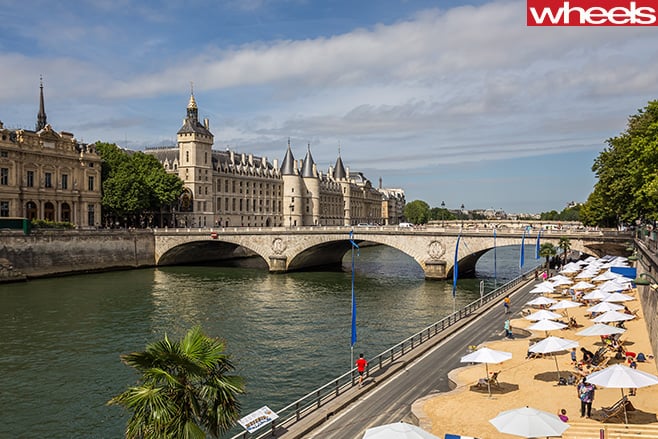
With the sky light but the sun still not up, we too speed on a block farther, to Rue Caulaincourt. We soar over the Montmartre Cemetery and across Rue Tourlaque where, in the film, a Mini dawdles across the intersection and is lucky to not have its rump swiped off. We, meanwhile, stare at the rump of a delivery van.
It provides another moment to appreciate the deception of Rendezvous’ soundtrack. The car accelerates out of Rue Caulaincourt in first gear. It winds out through four cogs, picking fifth just before the Mini dawdles past on Rue Tourlaque. That’s in a distance of just 400 metres.
Then there’s a long stretch at full revs in fifth before the hard, uphill right turn onto Avenue Junot. Another 400 metres. At, presumably, something near the 275 GTB’s top speed of 265 km/h. In fact, the car’s average speed over those 800m works out at 76km/h. Which, given the cobbles and the cars crossing and the constant current of danger, was still pretty impressive.
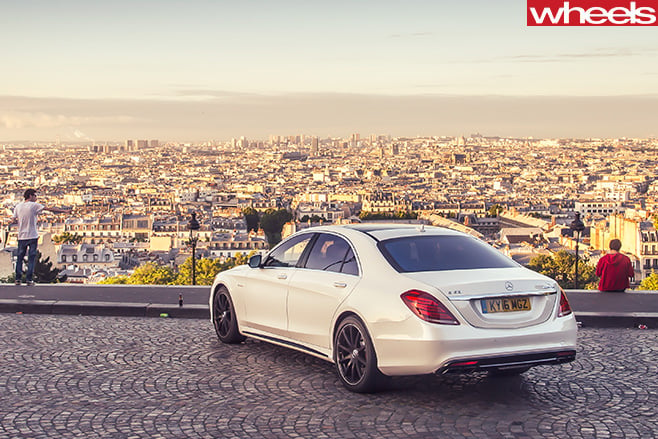
We rise into the lightening sky over Rue Norvins, which wiggles through a skinny cluster of restaurants and opens into Place du Tertre; at this hour, devoid of the beret-wearing illustrators asking to draw our portraits. Swinging around rue Azais, we rumble noisily onto the Parvais du Sacré Coeur: the finish.
Having covered 1.4km more than Lelouch – legally, being another key difference – and feeling quite pumped by the experience, our stopwatch shows a humiliating 23min 59.2sec. We had pushed and pressed on and averaged 29.7km/h. Lelouch, over 10.5km, averaged 77.1km/h.
There was no blonde in a striped dress for us, either. A raggedy-arsed handful of incredibly pissed teenagers sit on the steps, Paris spread out at their feet like a vast, crumpled newspaper. There to watch the sun rise, they’re smashing beer bottles on the steps. In front of them, in the City of Light, the lights are switching off.

